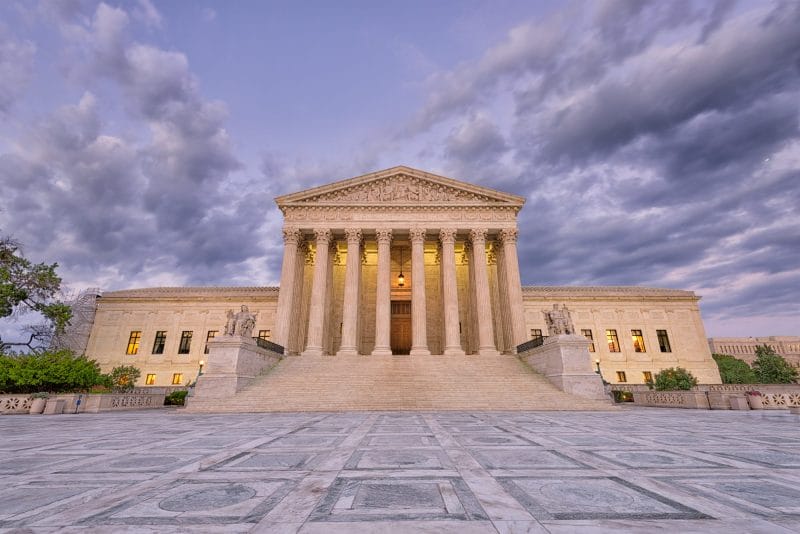Law schools may face tougher sanctions if too many graduates fail bar exam
By Anne Ryman, Johnathan Ellis, R.J. Walcott and Melanie Payne |
USA Today
 am Goldstein graduated from law school in 2013, eager to embark on a legal career.
am Goldstein graduated from law school in 2013, eager to embark on a legal career.
Five years later, he is still waiting. After eight attempts, Goldstein has not passed the bar exam, a requirement to become a practicing attorney in most states.
“I did not feel I was really prepared at all” to pass the bar, Goldstein said of his three years in law school. “Even the best of test preps can’t really help you unless you’ve had that solid foundation in law school.”
Goldstein attended Arizona Summit Law School in Phoenix, one of 18 U.S. law schools where at least a quarter of graduates who took the bar exam didn’t pass within two years, according to a yearlong USA TODAY Network investigation into law schools. The analysis of data from the American Bar Association shows that the law schools include large state universities, private for-profits, and independent colleges enrolling, in all, about 8,000 students, or 7 percent of U.S. law school students.
Experts say the numbers represent a significant failure to meet the expectations of law school students, who after spending three years in school graduate with debt averaging more than $115,000.
“If you are offering people a program that is designed to lead to admission to the bar, then there should be a reasonable expectation of achieving the goal,” said Deborah Jones Merritt, a law professor at Ohio State University Moritz College of Law.
Goldstein’s experience highlights the difficulties law-school graduates face when they struggle to pass the bar. The exam is offered twice a year and it takes a few months to get results. Failing even once can significantly delay a graduate’s entry into the profession.
In the meantime, many take lower-paying jobs, as Goldstein did working as a law clerk. What he earned didn’t put a dent in his $285,000 in student-loan debt, most of which was accrued in law school. The cost to Goldstein of repeatedly taking the exam, including travel and preparation, has so far totaled $18,000.
On Monday, a policy-making body for the ABA will weigh a controversial proposal that would toughen the bar pass standard for law schools. The proposal is expected to be vigorously debated and comes after criticism that the accrediting body has allowed schools to admit too many lower-achieving students who struggle to pass the bar.
Here’s what could change: Law schools currently have five years to show 75 percent of their graduates who take the bar exam have passed. The proposal would narrow that to just two years.
Supporters of the change say the five-year time frame has allowed schools with dismal bar-passage rates to continue operating. But critics worry struggling schools will respond by requiring higher scores on the law school entrance exam. This will hurt diversity in law schools and the legal profession, they say, because minority and economically disadvantaged students historically have scored lower on the Law School Admissions Test.
Kyle McEntee, executive director of Law School Transparency, a non-profit group that tracks data related to law schools, said the ABA’s current bar-passage requirement, known in legal circles as Standard 316, is full of loopholes and doesn’t hold schools accountable. No school has ever been found out of compliance by the ABA, including when several schools posted bar-pass rates below 50 percent in consecutive years.
“It’s virtually impossible to fail,” McEntee said, “although some schools are managing to come close.”
‘We doI’t want to slam the doors’
In 2018, the ABA lifted the curtain on the performance of its roughly 200 accredited schools, publishing for the first time the bar pass rates for their 2015 classes during the two years following graduation.
Western Michigan University Cooley Law School was among the lower-performing schools, with a 70-percent passage rate during that period.
The private, Lansing-based school is one of the least selective law schools in the country. About 86 percent of applicants between October 2017 and 2018 were accepted.
Jeffrey Martlew, Cooley’s interim president, said the school gives students who might be rejected by other law schools the opportunity to pull themselves up by their bootstraps and become successful lawyers.
Cooley became the largest law school in the country during the boom for legal education between 2000 and 2010, enrolling nearly 4,000 students at its peak. Amid a decline in law school enrollment since 2010, Cooley became more lenient. In its most recently admitted class, the bottom 25 percent of students had an average LSAT score of 139, down from 143 a few years earlier.
Martlew acknowledged that a score of 139 is too low for admission. In short order, he said he plans to improve the academic profile of its students and boost graduates’ bar passage rates. Under his plan, students who enroll through the standard admission process would need an LSAT score of at least 145.
But Martlew, a former judge, opposes the ABA’s proposed bar-pass standard. He calls it a “radical departure” that, if adopted at all, should be phased in so schools can adjust.
But more importantly, he said, the standard would force law schools to turn away lower-profile students, among them many minority students, a move that would likely make the nation’s law schools less diverse.
“We don’t want to slam the door on our access mission,” he said, “which is really what makes us different than any other law school.”







